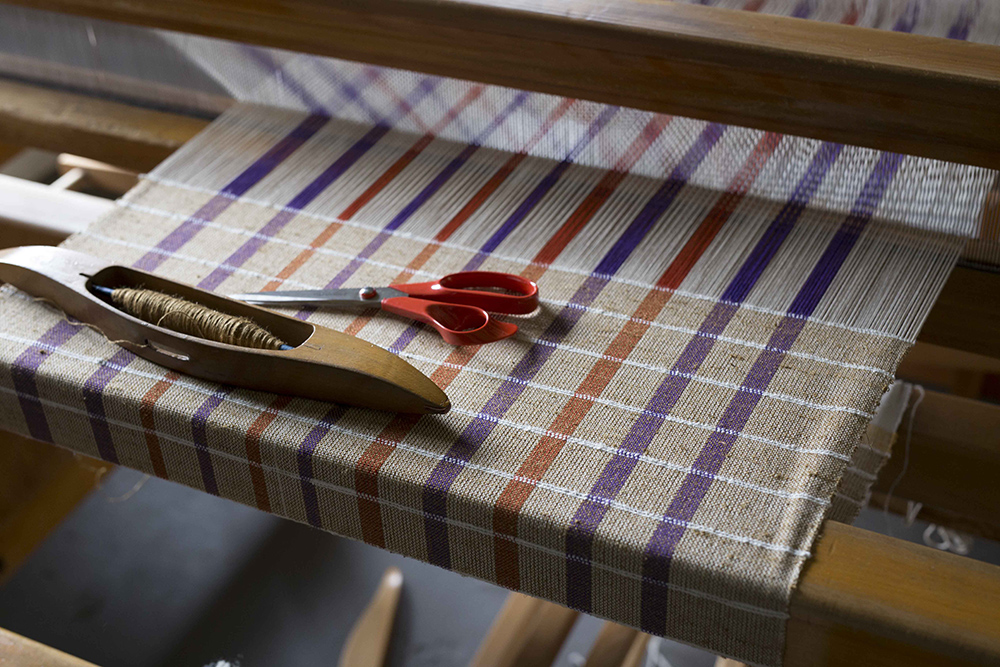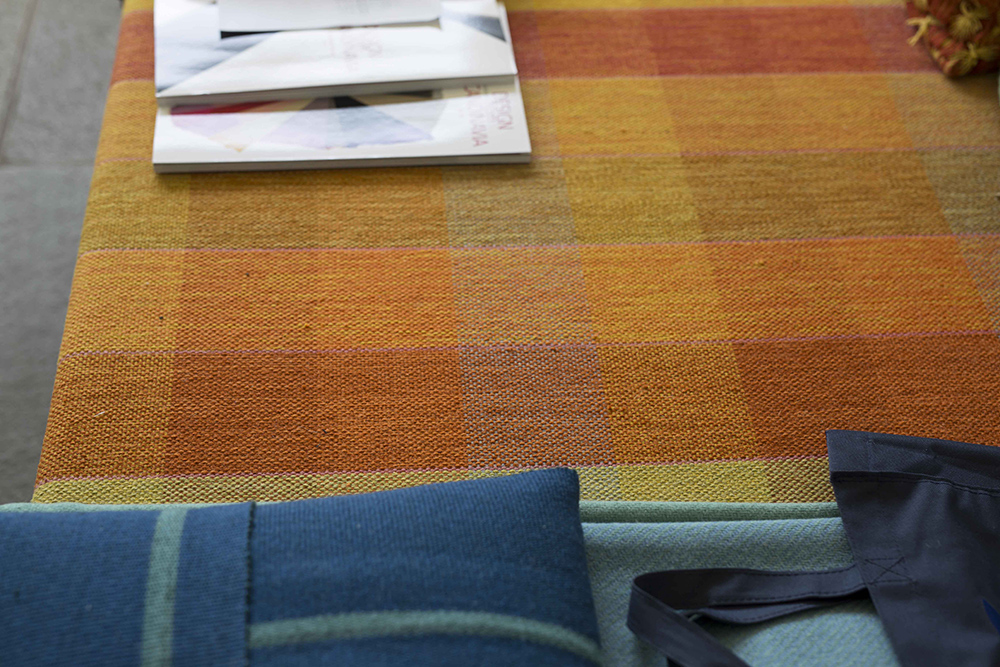

Hanne Vedel is the intrepid woman who runs Spindegården, a textile workshop that since its opening in 1948 has played a pioneering role in shaping Danish textile design. The workshop has supplied high quality textiles for countless churches, public institutions, and private companies, and collaborated with architects like Poul Kjærholm, Finn Juhl and Tyge Arnfred.
Spindegården was founded by Paula Trock, who, in 1928, had opened a weaving school in Askov with the intention of offering women an opportunity for gainful employment that was particularly suited for their needs. In doing so Trock not only helped women, but took an important step in reviving the Danish art of hand-weaving, which had almost disappeared with the industrial revolution and its concomitant availability of cheap, machine-made textiles. Unlike Sweden and Finland, which endeavored to protect the craft by establishing associations that subsidized it and perpetuated training in old techniques, Denmark did not make a concerted effort to preserve and promote its folk textile weaving tradition. Trock’s project of “rais[ing] the artistic and professional quality for textiles of Danish spinning and weaving through creative work and experimentation” was therefore consequential—it not only educated several generations of hand-weavers, but also helped raise the profile of the craft and the quality of its products.
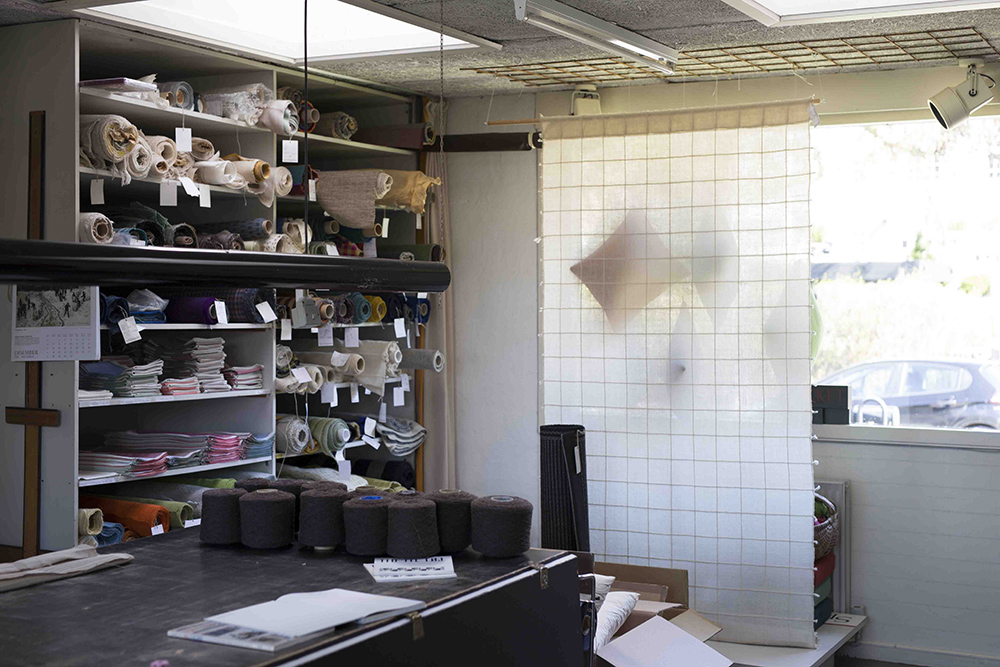
Through her quest for quality Trock became invested in the entire process of creating textiles, from the breeding of Danish sheep to the processing and dying of wool, to the honing of particular weaving techniques for different types of wool. Striving for an organic relationship between her craft and the environment that supplied its raw materials, she developed dye colors, together with Einar Hansen’s dying workshop, that resembled the hues of the Danish landscape. Her work garnered her a great deal of praise: she won three gold medals at the Triennale in Milan (1954, 1957, 1960), and exhibited at the Metropolitan Museum in NY in 1960 and the 1963 world exhibition, among others.
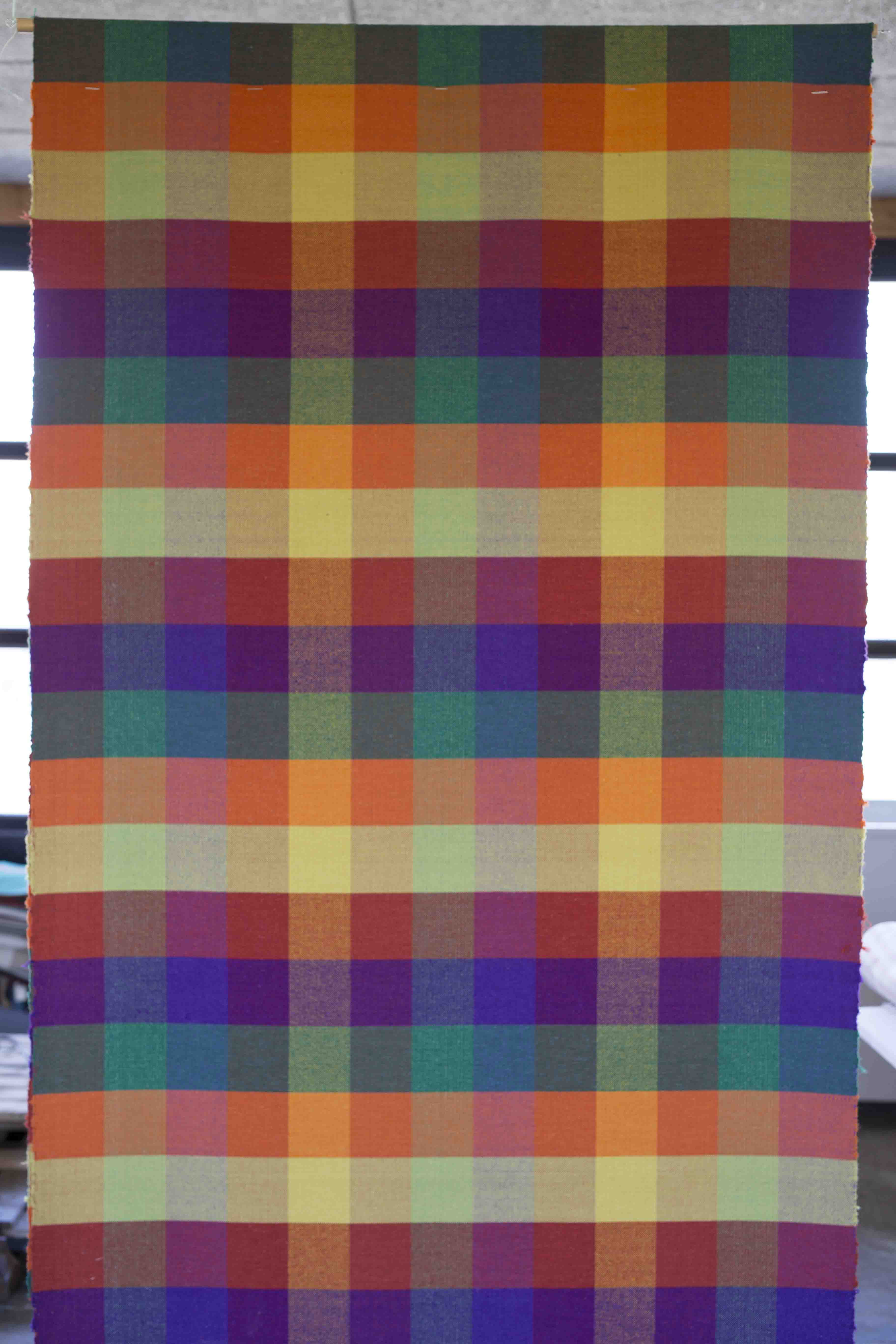
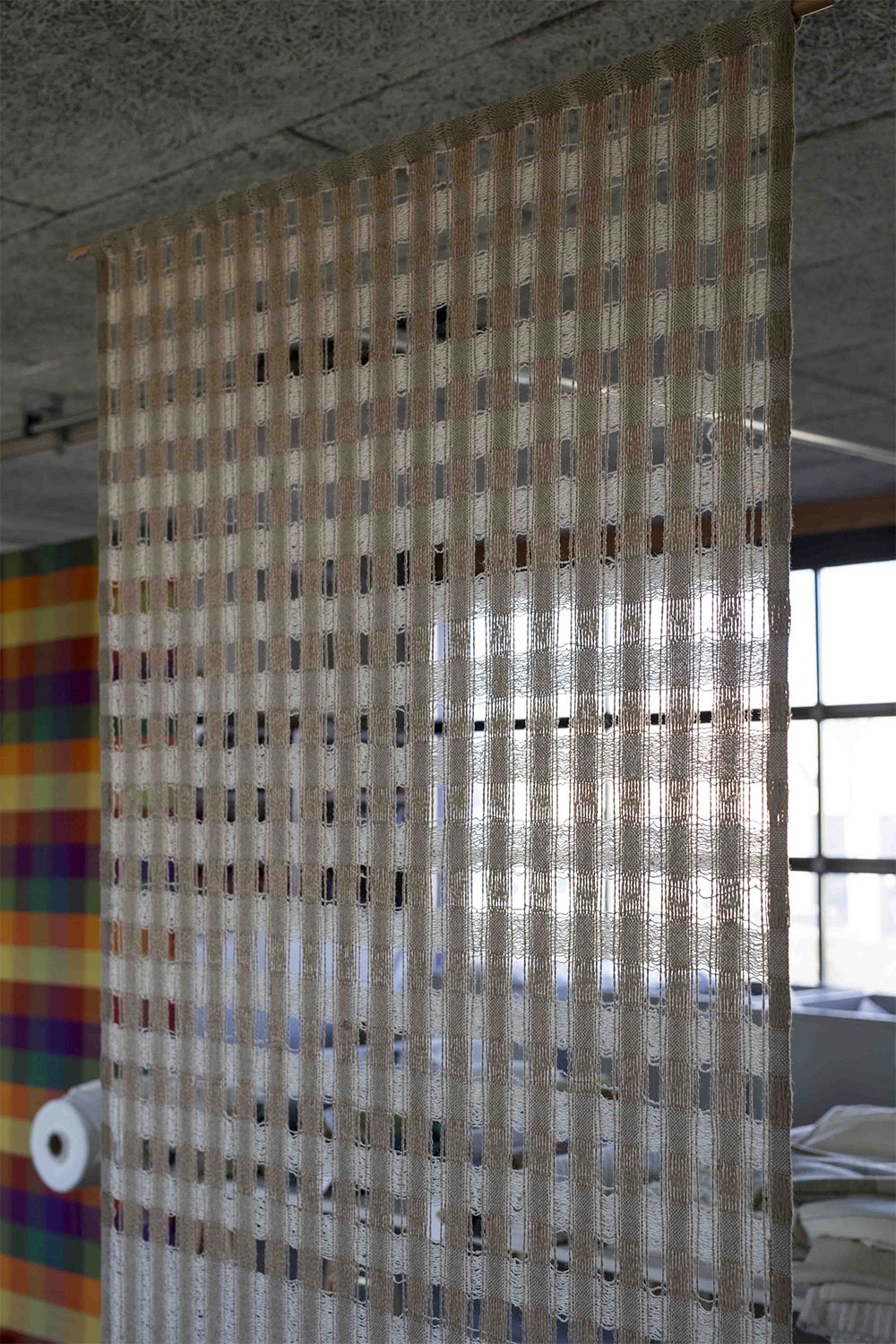
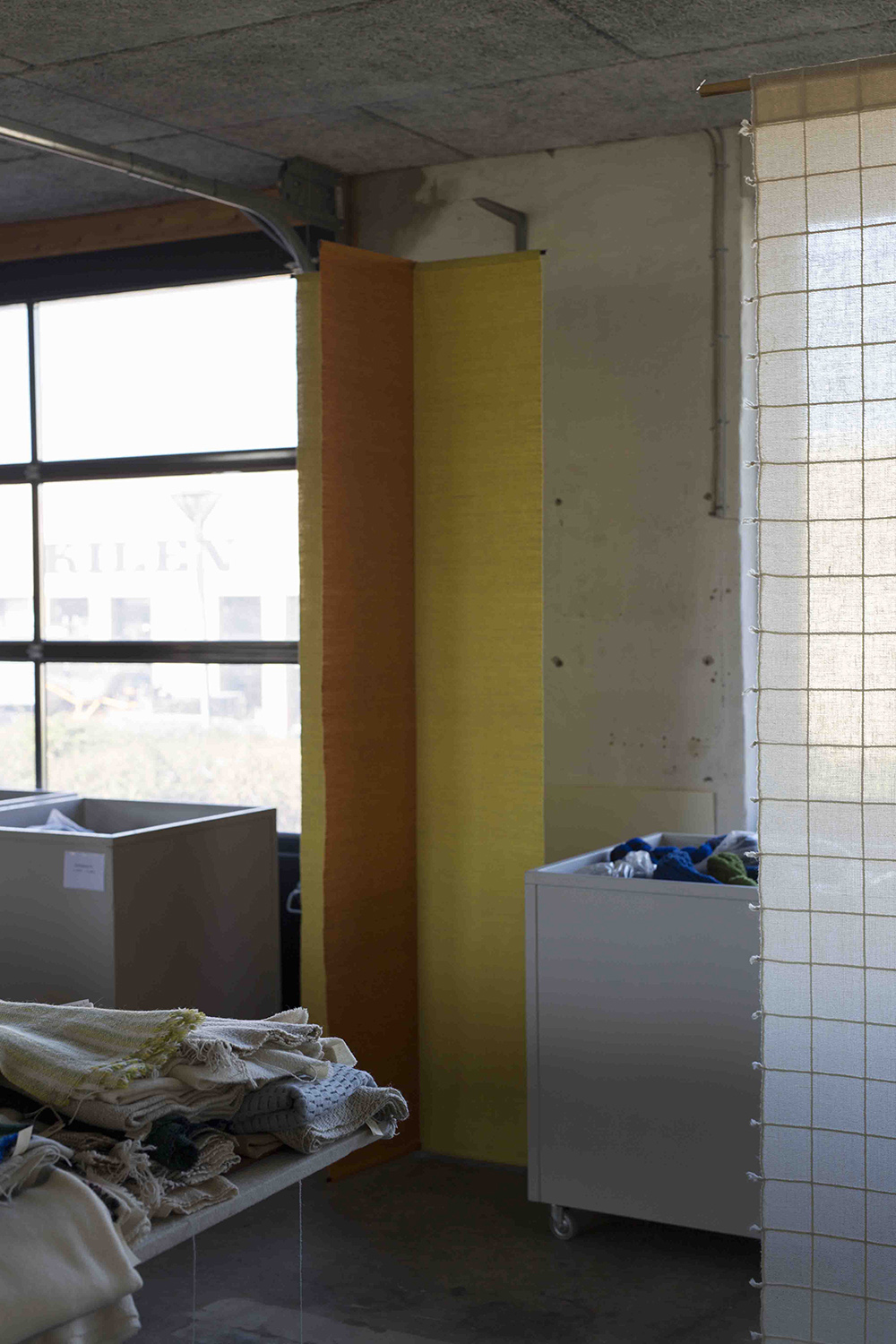
In 1970 Paula Trock left Spindegården to the leadership of Hanne Vedel, who is still, at the age of 85, at the workshop’s helm. When she took over, Vedel already had her own workshop in Åbenrå, so Spindegården was moved there. Like Trock, Vedel has always worked from Danish weaving traditions and strove to produce textiles of the highest quality. Her production included rugs, upholstery cloth, curtains, cushions, and her designs are distinguished by simple, modern patterns where the details are subordinate to the whole. She also designed textiles for industrial production, and worked closely for a long period with cabinetmaker Rud. Rasmussen. Her works can be found in many Danish and international institutions and companies: the Danish parliament, Denmark’s National Bank, IBM in Brussels, Siemens in Munich, and the European Court of Justice in Brussels. She recently also designed curtains and upholstery for the newly renovated Finn Juhl room in the UN building in NY. In Through the 1980’s and ‘90’s, Vedel received many commissions from churches—among them Haderslev, Odense, Maribo and Ribe cathedrals—to produce textiles for services, including rubs, chasubles and altar cloths. For these she created exquisite textiles, always taking into consideration a given church’s architecture and character.


Hanne Vedel is the bearer of an important tradition in Danish design, and her career is one of the most authentic instances of Danish modern and craft tradition coming together to create an enduring legacy. Under her leadership at Spindergården, culture, aesthetics, functionality, and craftsmanship have been woven together as expertly and beautifully as the wool, cotton and flax yarns that make up her rugs, curtains, and upholstery.

